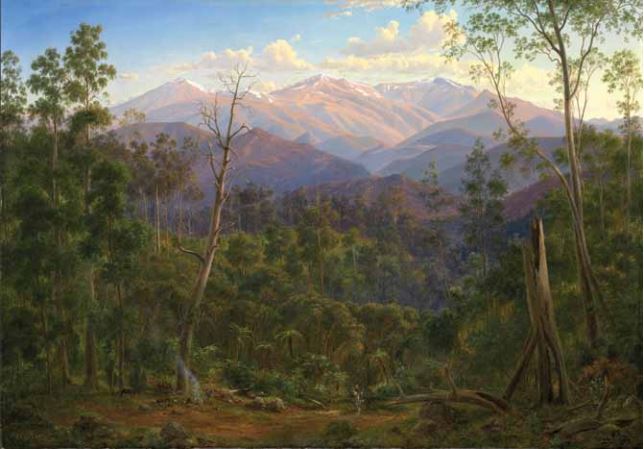Locating the aspect location of von Guérard’s painting of the Kosciuszko massif with spatial technology

The colonial artist Eugene von Guérard travelled extensively throughout south-eastern Australia, sketching thousands of views during his three-decade-long sojourn in Australia. His field drawings are renowned for their fidelity to nature and observational accuracy, but the validity of the latter claim depends on comparing drawings with the view at the sites where he sketched. The location of the view in some artworks, such as Mount Kosciusko, seen from the Victorian Border, has eluded art historians and aficionados who have ventured into the field.
This article from George Hook at Federation University canvasses his extensive collation of clues from historical narratives, maps and surveying techniques to limit the search area for the vantage point where von Guérard sketched the view on which he based his painting of the Kosciuszko massif. Novel use of spatial technology utilising satellite imagery, Global Positioning System (GPS) and Shuttle Radar Topography Mission (SRTM) data, particularly digital elevation models, to locate the actual site is explored, and the topographical accuracy of his sketches evaluated when compared with photographs taken from close to the site. Finally, the potential value of using spatial technology in art history field work is discussed.
The use of applications based on satellite, GPS or SRTM data, such as Google Earth, Memory-Map and PeakFinder, to locate difficult-to-find, isolated sites of views illustrated in paintings of wilderness and alpine areas, as many of the views in von Guérard’s paintings are, appears to be a novel approach for which no precedent has been found in the literature.
The potential for utilising this spatial technology, along with the other strategies described in this article, to find the vantage points of previously unlocated views that von Guérard sketched and then painted back in his studio, is fully realised in the research program that encompasses this study. This has involved locating isolated, undocumented sites in the Grampians of western Victoria and, elsewhere, finding previously undiscovered sites in more accessible locations by using these topographical tools in conjunction with geomorphological, geological and ecological clues recorded in the field sketches on which the artworks are based (Hook 2017). PeakFinder’s digital elevation model, in particular, proves to be a highly useful tool for locating the sites of views illustrated in von Guérard’s landscape paintings, and may find further application in the field of forensic cartography.
The full paper is available online, open access from CSIRO Publishing at http://www.publish.csiro.au/RS/RS18002.
Hook George (2018) Using spatial technology to locate the view illustrated in Eugene von Guérard’s painting of the Kosciuszko massif. Proceedings of the Royal Society of Victoria 130, 18-33.






